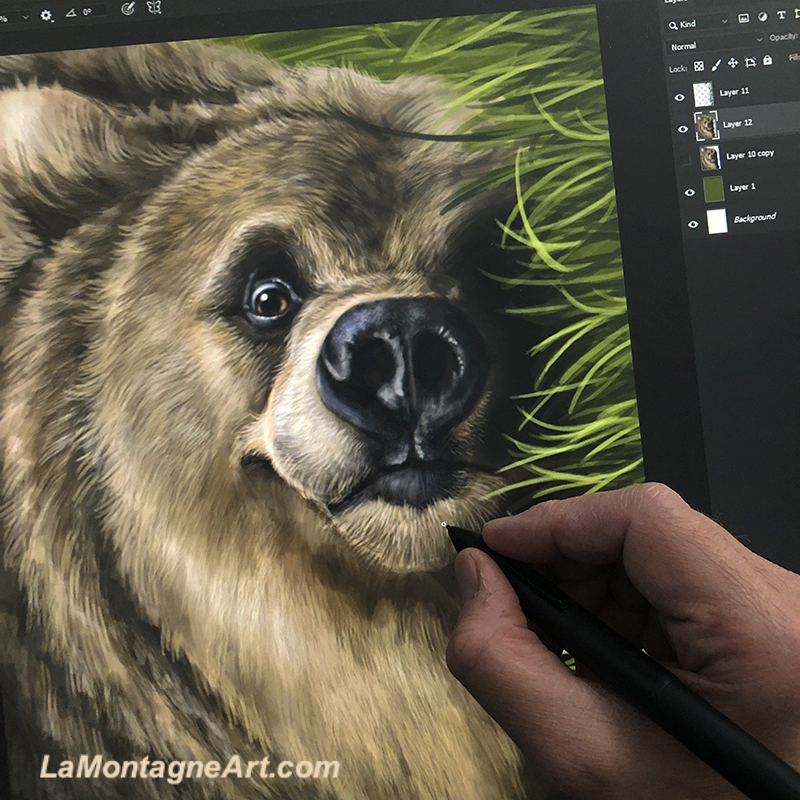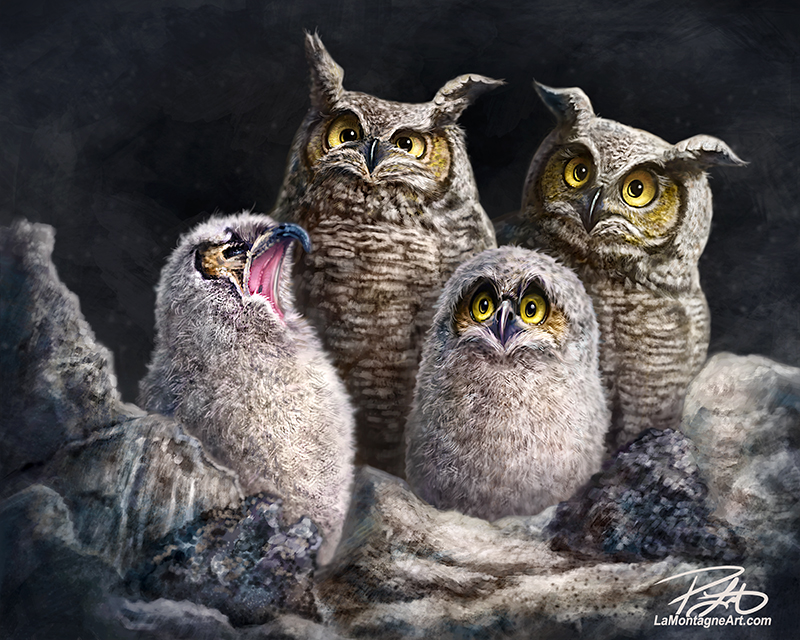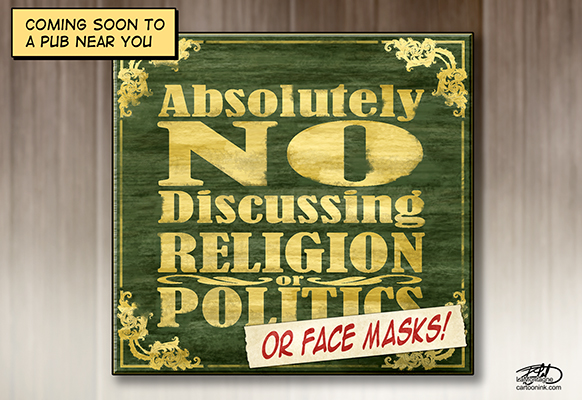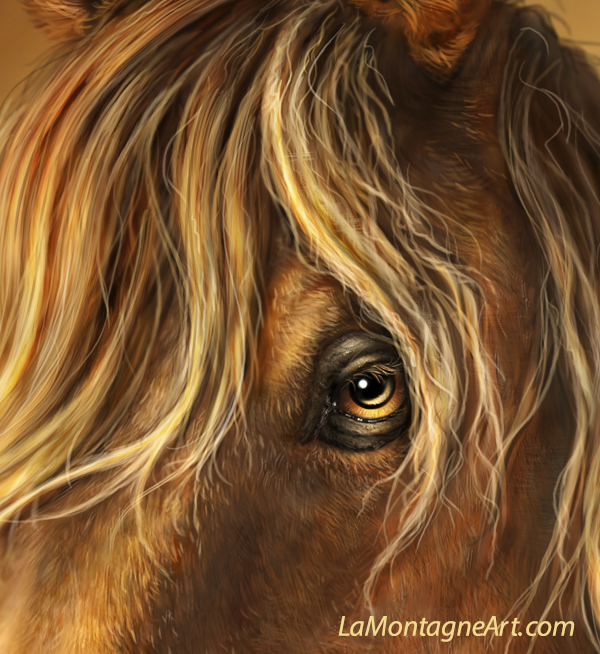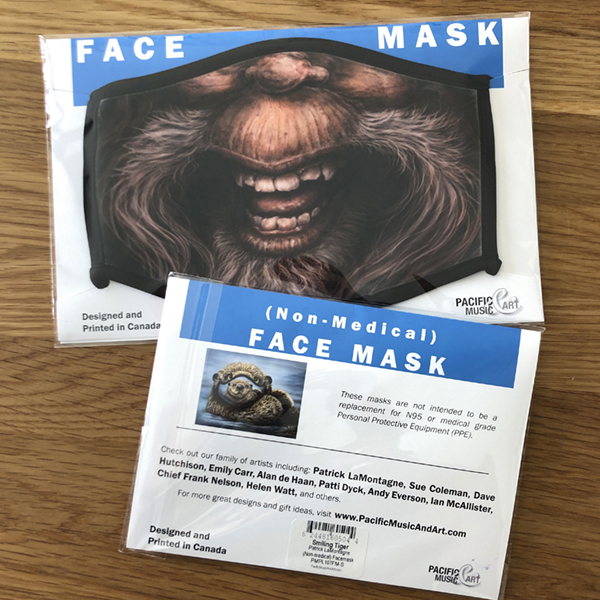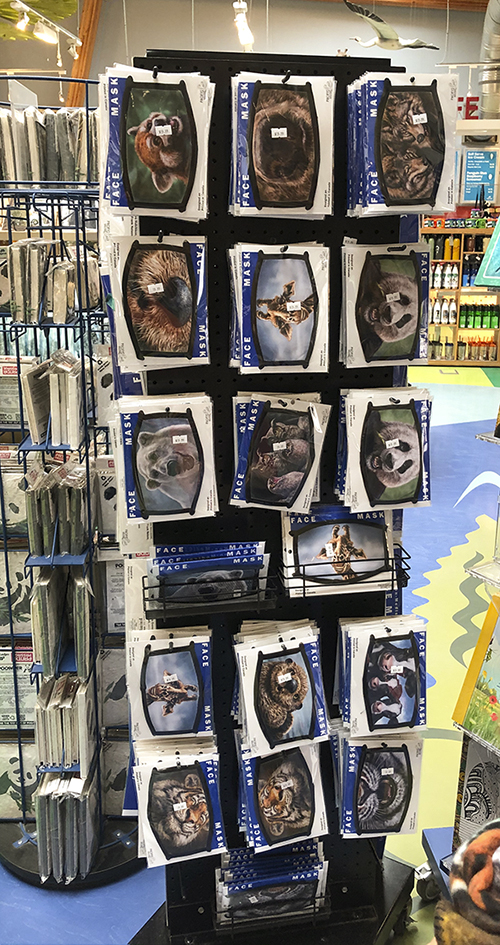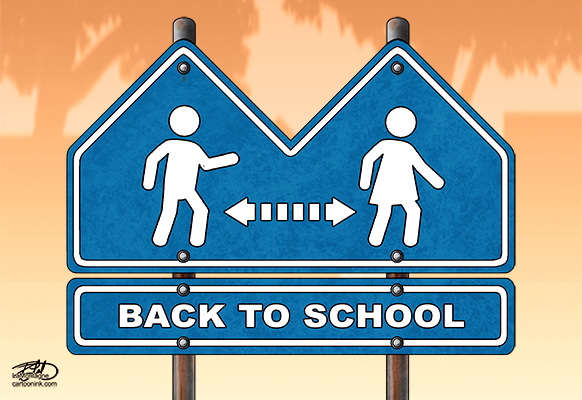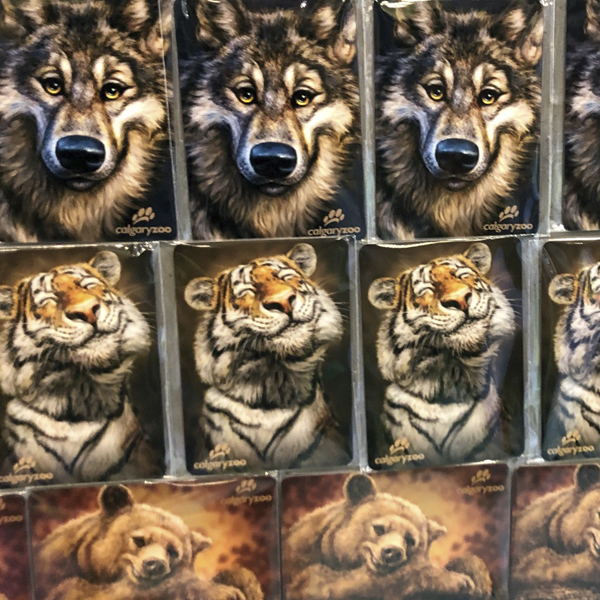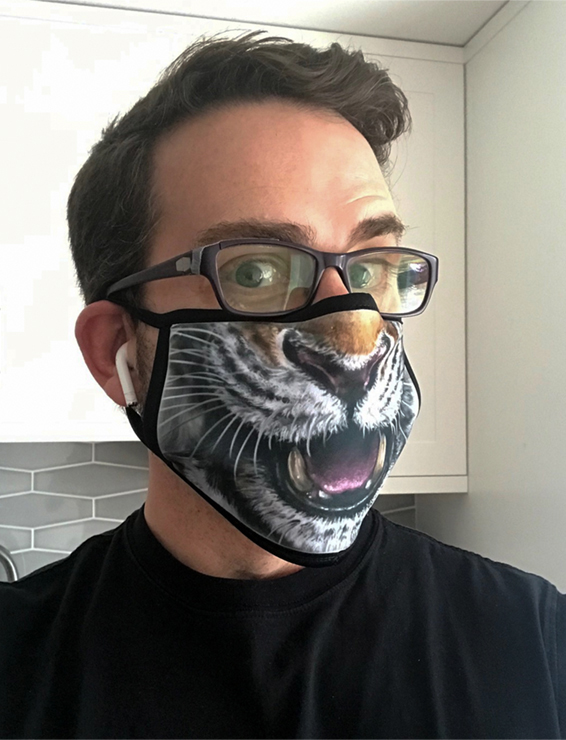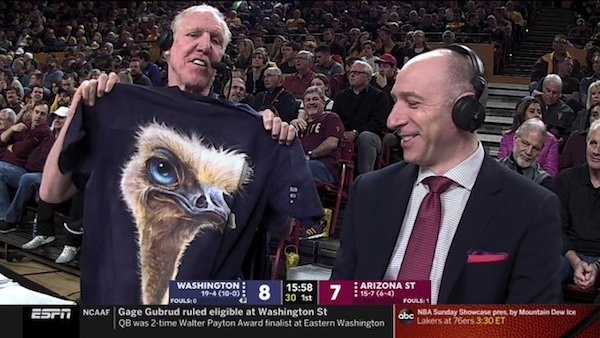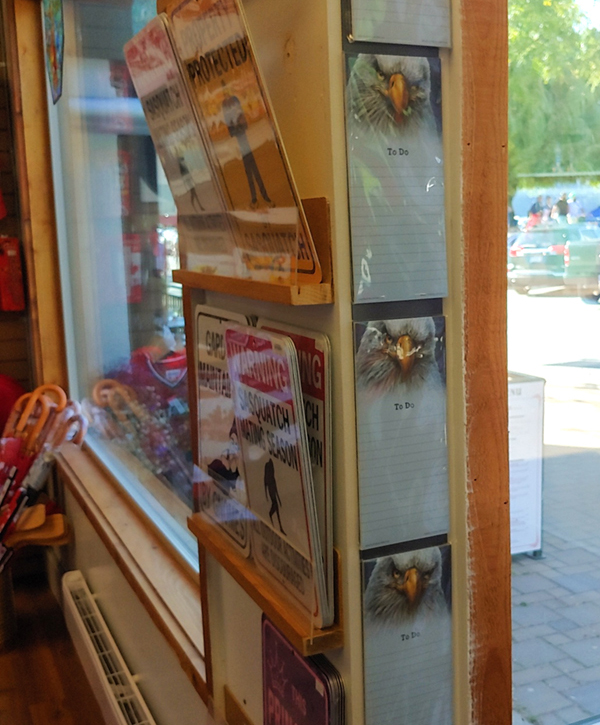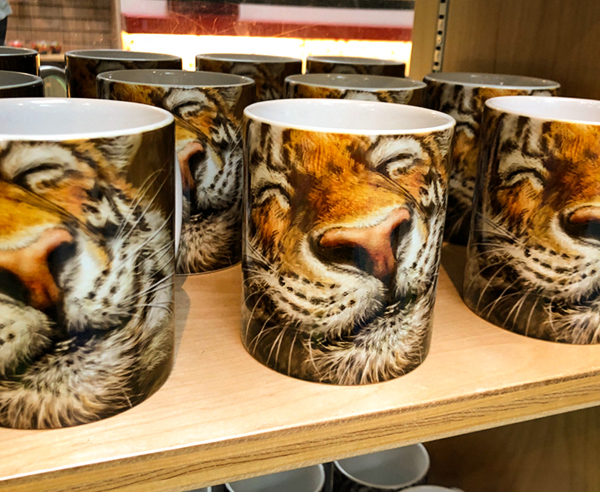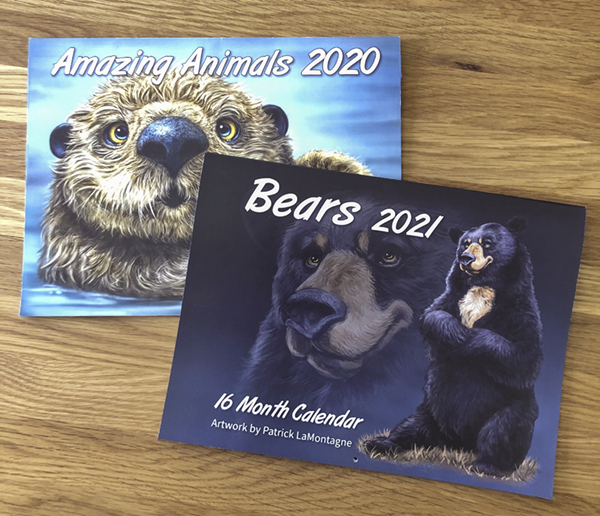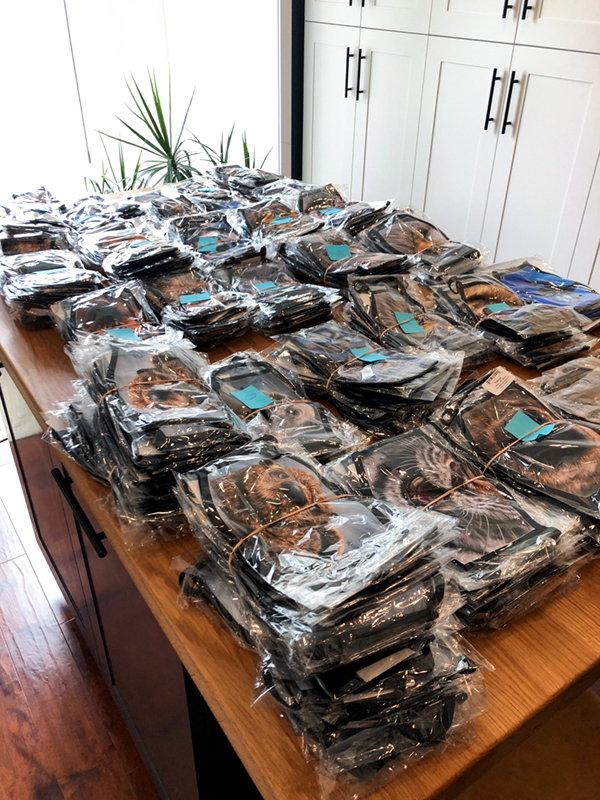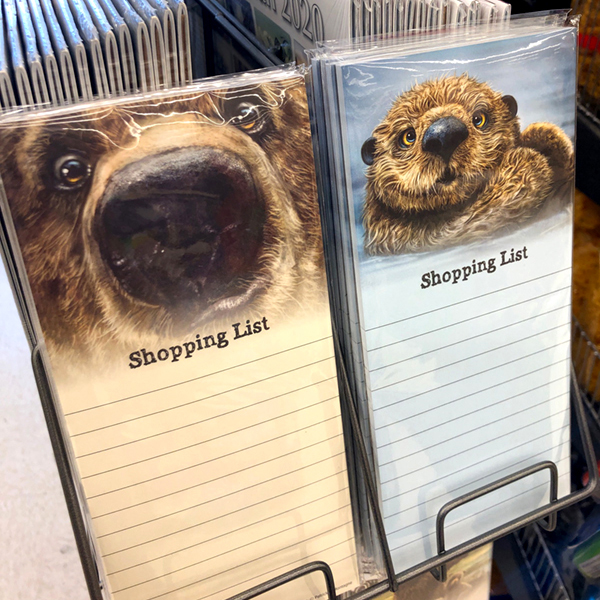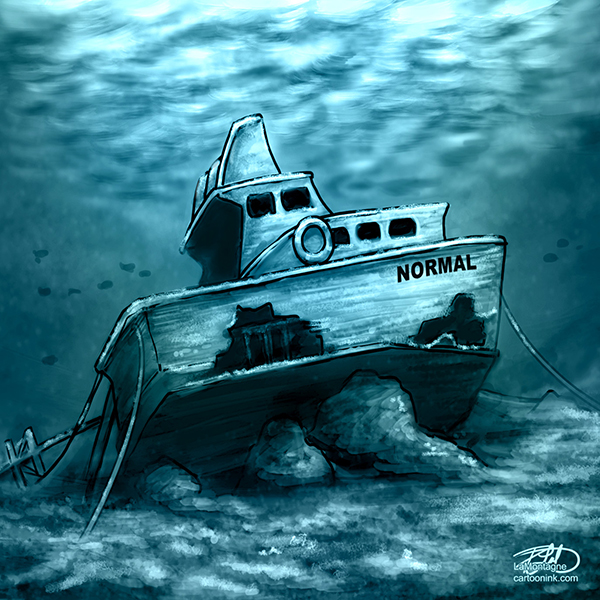
Taking the summer off from promoting my business was an uncomfortable decision.
Covid-19 was the catalyst, but this period of reflection was overdue. I’ve been uninspired, bored with my own art and writing, unable to maintain the pace.
In 2005, I had been working as an Office Admin for a small physiotherapy clinic here in Canmore, spending early mornings, evenings and weekends drawing editorial cartoons. Eventually, that part-time side hustle allowed me to quit my job and become a full-time artist.
It seemed like a big risk, but not massive. We decided that if I couldn’t pay my half of the bills, I’d just get a part-time job. There were plenty of them available.
I’ve had a pretty good run as an editorial cartoonist for the past two decades. It afforded me the ability to try other art-related avenues, one of which became the evolution of my career, painting my funny looking animals.
I’ve never lost sight of the fact, however, that the foundation of my profession for the past twenty years has been an industry afflicted by a slow and terminal cancer. To expect that I will be drawing editorial cartoons in ten years is almost fantasy.
Then again, I said the same thing in 2001, so what do I know?
We pretend to be masters of our own fates, but we’re notoriously bad at predicting the future. Who had Global Pandemic on their schedule for 2020?
As one might expect, those first years were a struggle. I often went into overdraft on my business account and couldn’t afford many luxuries. I did get a part-time job working at a local DVD rental place (remember those?) but not because of the money. I needed to get out of the house and one of the perks was free movie rentals. This was in the dark ages, kids, before streaming video.
I enjoyed the experience for a year, but working until 11:30 some nights, then getting up at 5:00 to draw quickly lost its appeal.
There were some in my profession who figured the next evolution in the craft would be animated editorial cartoons. I invested in Flash software, training courses, royalty free music, learned how to record audio, and spent countless unpaid hours creating those things. During a federal election one year, all of the big Canadian media outlets wanted to run my animations on their websites, but in a sign of things to come, almost none were willing to pay for them.
I even had a weekly series called Big Plans, where a cartoon beaver in a suit and tie, talked about the week’s political events, complete with cutaway scenes. It was an animated version of the Daily Show or Rick Mercer Report, without interviews and not nearly as funny.
It took about twenty hours a week to create each one, and I only got paid a small amount for a handful of them.
I didn’t like the work much and wasn’t a very good animator. I was more relieved than distraught when it came to an end. But I took the risk, and invested the time, on the off chance that it might pay off.
There have been a few ventures like that, but I’ve learned something from each, lessons for the next idea. Eventually, one of those tries became my whimsical wildlife paintings, changing the course of my life and career. As Steve Jobs once said, you can only connect the dots in hindsight.
When COVID-19 landed on us, a lot changed for most people in a short amount of time. All in the same week, several of my newspapers told me they could no longer afford to pay any freelancers. A temporary layoff, but nobody could say for how long. That was at the end of March. Only one of those papers has hired me back.
This year was supposed to be a big one for my painted work, building on the momentum of my newest license with Pacific Music and Art. I was beginning to see (and hear about) my work being sold in stores all over the place. With multiple re-orders, more retailers signing on and word getting out, 2020 should have been a leap forward.
I don’t need to explain why it wasn’t.
Thankfully, Mike at Pacific Music and Art had the foresight to see the coming demand for face masks and that my paintings would work well on them. I put in late nights, even earlier mornings, and long days preparing the images while still drawing the same number of cartoons for about half the clients.
Promoting, packaging and shipping the masks, plus the paperwork and bookkeeping, it was exhausting. Add in the uncertainty of the pandemic, both the health and financial repercussions, and burn-out was inevitable.
Thanks to my newsletter followers, I filled two large mask orders, and a third smaller one, the revenue helping to shore up my other losses. Pacific Music and Art is now selling the masks wholesale to retailers and individual customers can order directly from their site. I’ve received photos from people who’ve bought my masks at The Calgary Zoo. They’re also available at Shopper’s Drug Mart here in Canmore, stores in Banff, plus a bunch of other places in Western Canada and in the Pacific Northwest.
Those sales now will mean revenue later this year.
I did a couple of successful print promotions, launched my 2021 calendar, and have gotten used to this new reality. You thought I was going to say normal, didn’t you? I think we can all agree, that ship has sunk. We need to build a new one.
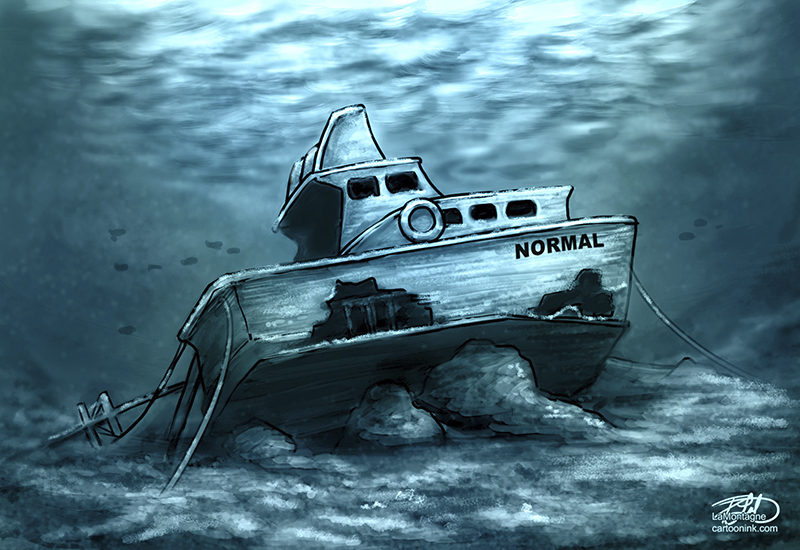 This frenzy of activity, adapting daily to more potholes than road, I had no gas left in the tank. I was still meeting my cartoon deadlines, but painting was a slog, and it felt like anything I’d write would be crap, even before I put my fingers to the keys. My past work seemed like garbage and I was circling the drain.
This frenzy of activity, adapting daily to more potholes than road, I had no gas left in the tank. I was still meeting my cartoon deadlines, but painting was a slog, and it felt like anything I’d write would be crap, even before I put my fingers to the keys. My past work seemed like garbage and I was circling the drain.
When you spend year after year creating art, promoting it, trying to sell it and come up with something better every day, taking time off from promoting it feels irresponsible.
I like to work. I don’t do well with too much time off. I’ve got a friend who has been talking about his retirement for years and finally managed to do it before he was 60. Unless something radical changes in me in the next ten years, the thought of not working does not appeal to me.
At this stage in my life, looking down the road, retirement to me would mean the freedom to only do the work I want to do. But I still want to work.
My biggest fear is that something will happen that will prevent me from being able to create, paint, and write. I dread the thought of an injury, an illness, a cognitive deficiency, something that will rob me of my abilities or mental faculties.
On report cards when I was a kid, common teacher comments were “doesn’t pay attention in class” and “not living up to his potential.”
It’s ironic that I’m now wary of not having enough time to reach that full potential.
Last year, my friend Jim and I were sitting on a deck of a cabin we rent, looking out at the pasture. In front of us, there were two windows in the covered section, but to the immediate left, the deck is wide open. A wasp was repeatedly bouncing off the glass, trying to get through.
I don’t recall if I said it or if Jim did, but we both connected with the message. “Boy, if that’s not a metaphor for life.”
All that wasp had to do was back off, turn left and fly six inches to freedom. Instead, it just kept bouncing off the glass.
Jim credits that moment with his decision to finally retire.
I took it as a message to rethink where I’m putting my energy.
There are many ways to reach your goals but beating your head against an immovable object isn’t one of them.
I’m already getting up early every day, working hard. I rarely take a day off and when I do, I still somehow manage to squeeze in something related to my business. It might be taking photos, doing some writing, reading trade articles, but that’s only because I enjoy my work and the creative pursuit. I don’t know how to separate the two, so I don’t try.
That also means there is no extra time to do more. It’s such a cliché, to work smarter, not harder, but clichés have longevity because they contain simple wisdom.
Maybe it’s because he was younger, with seemingly more time ahead of him than I’ve got. But, there’s a lot of water under the bridge between me and the guy who said, “well, if I don’t make enough money, I’ll just get a part-time job.”
I feel like I have a lot more to lose than he did.
He didn’t know that editorial cartooning would provide him with a good living for the next fifteen years. I know for a fact that it won’t provide me with another fifteen. Failing to course correct for that reality would be short-sighted.
I remember somebody telling me once to cup my hands together as if I were holding some water within them, then to squeeze my hands into fists and asked, “what happened to the water?”
When you hold onto something too tightly for fear of losing it, you lose it anyway.
During the past two months of promotional hiatus, I completed a few paintings, wrote quite a bit in a fiction novel I started this year, drew the usual editorial cartoons, listened to podcasts, read books and articles and I worked. My computer died suddenly one night, which I’ll talk about in another post, and I had to get a new one built. I got away to the cabin for a few days, took some pictures, and hid from the tourists who have flooded this valley all summer.
And I asked myself some hard questions.
“Where do I want to be in a couple of years? Five years? Ten?”
“On what am I wasting a lot of time and effort that doesn’t get me there?”
“What marketing opportunities am I missing out on?”
“If I stopped banging into the glass, backed up, took a breath, and looked around, what might I see?”
For the first couple of weeks, I felt like I’d forgotten something, that nagging feeling like I’d left the stove on. I’d become so used to posting on Instagram, sharing stories, scrolling through other people’s stuff. It ate up a lot of creative time.
When I finished a painting, it felt strange not to immediately size it for the blog, create a closeup, write a post about it, share it on Instagram with all of the hashtags, tell a story, write a newsletter, share that, then wait to see what kind of reaction I might get.
Promotion and marketing, it’s part of working for yourself. It’s necessary if you want to make a living with your art or whatever you create. You must sell it. But taking this break made me think about how I’m doing that.
Do I need to share it as soon as it’s done? Would it matter if I waited a day? Maybe two? Do I have to immediately write about it? Does it have to be immediately shared on Instagram?
The answer to these last questions is No.
One marketing opportunity I’ve decided to explore is to offer an audio version of some of my blog posts, starting with this one.
I’ve had several people tell me they like my writing, but some get the newsletter and realize they haven’t the time to read it, They put it aside for later and never get back to it.
I hear ya. Happens to me all the time. But if there’s an audio version, it can be downloaded and listened to at your leisure.
An audio version allows followers to consume the content the way they want to. From what I’ve read, it increases followers and site interaction, which directly translates to sales.
Will that kind of marketing work for me? I have no idea, but I’ll give it a try.
As for those other questions, they’ll require a longer view, some percolation in the old melon. Not quite as deep as “Why am I here?” but not so shallow as, “Peanut butter? Or jam, too?”
The break was worth it and I will do it again.
Whether you read this, or listened to it in the new format, thanks for making the time. One thing I’ve never forgotten in this roller coaster life of being creative for a living…it wouldn’t happen without you.
___
© Patrick LaMontagne
Follow me on Instagram @LaMontagneArt
Sign up for my newsletter which features blog posts, new paintings and editorial cartoons, follow this link to the sign up form.

 © Patrick LaMontagne
© Patrick LaMontagne

